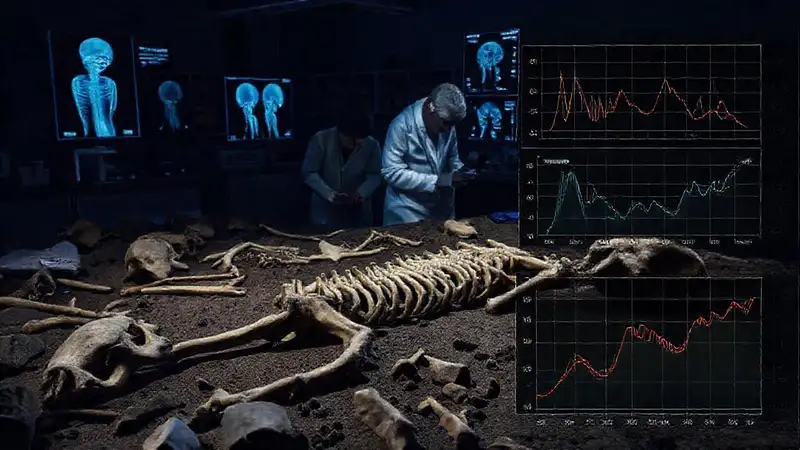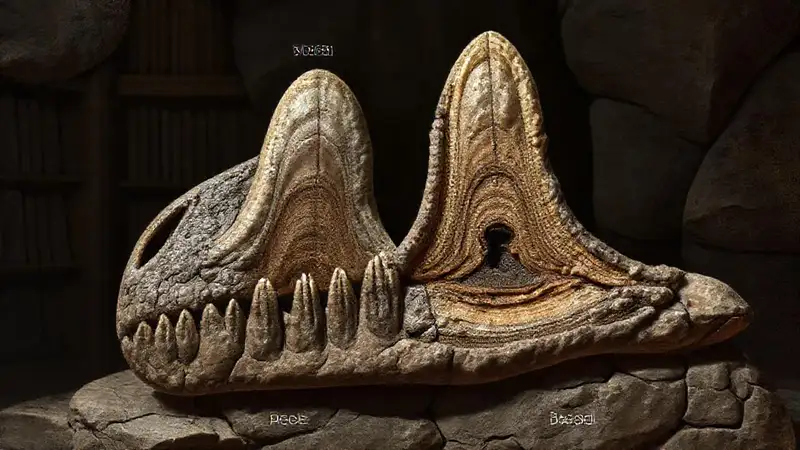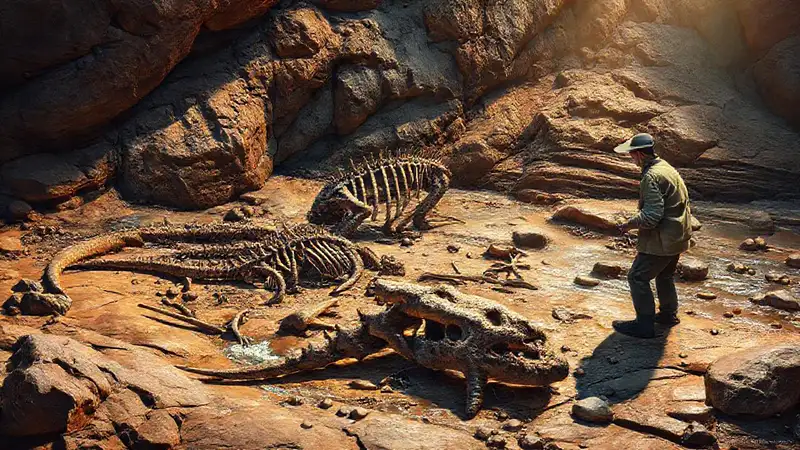Understanding the life histories of dinosaurs is a monumental challenge. Fossil evidence provides snapshots in time, and often these snapshots are incomplete. Paleontologists rely on a variety of techniques to reconstruct past ecosystems and behaviors, and one particularly compelling type of evidence comes from what are known as "bonebeds." These deposits, characterized by dense concentrations of fossilized bones, offer a unique window into catastrophic events affecting dinosaur populations. Analyzing these bonebeds is crucial to reconstructing ancient environments and understanding the risks faced by these extinct giants.
Bonebeds aren't simply piles of bones; they represent specific, often devastating, events. Determining the age of these events is absolutely vital to interpreting their significance. Knowing when and where these mass mortality events occurred allows us to piece together broader patterns of dinosaur ecology, climate, and potential predators. Without accurate age estimates, our interpretations of the bonebeds' meaning – were they volcanic eruptions, floods, disease outbreaks, or something else entirely? – remain highly speculative.
Identifying the Source of the Bones
The initial step in age estimation focuses on understanding the source of the bones. Researchers carefully examine the skeletal elements present within the bonebed. They look for consistent wear patterns, growth lines (oticosclerosis), and other indicators that can reveal the species and potentially the age of the individuals represented. Detailed examination of the bones’ morphology, the distinct features of each bone, helps distinguish between juvenile, adult, and potentially even sub-adult specimens. This careful sorting aids in building a representative sample of the individuals involved in the event.
The spatial distribution of the bones is also vital. Are the bones tightly packed together, suggesting a rapid burial, or are they more dispersed, indicating a prolonged exposure? Mapping the bone distribution can reveal areas of concentrated mortality and give clues about the dynamics of the event. Importantly, the types of bones present – are there predominantly large, robust bones or smaller, more fragile ones? – offers insights into the size range of animals involved and potential causes. This detailed documentation allows researchers to formulate hypotheses about the initial trigger.
Radiometric Dating Techniques
Once the bone source is understood, researchers turn to dating methods. Traditionally, biostratigraphy—correlation with known fossil layers—was the primary tool. However, modern radiometric dating techniques have revolutionized this field. Thermoluminescence (TL) dating, which measures accumulated radiation in the surrounding sediment, can provide estimates of when the sediment was last heated, often linked to the burial of the bones.
Argon-Argon dating, which dates the volcanic ash surrounding the bonebed, is increasingly used. It’s particularly reliable if there's a clear and well-dated layer of volcanic ash capping the bonebed deposit. These techniques are not without limitations. The accuracy of the dates depends heavily on the quality of the samples and the geological context. However, they provide increasingly robust chronological anchors for understanding the timing of these events.
Sedimentological Analysis – Context is Key

Beyond the bones themselves, the surrounding sediment provides crucial clues about the event's age. Analyzing the sediment’s composition—grain size, layering, and mineral content—offers insights into the depositional environment. For example, a rapid flood event would likely leave behind a distinct sedimentary record of turbidites (muddy flows), while a volcanic eruption would be characterized by ashfall and pyroclastic deposits.
The presence and types of fossil plant remains or invertebrate shells in the sediment can further refine the age estimate. These “associated fossils” provide independent chronological markers and help constrain the timeframe of the bonebed. The degree of compaction and cementation of the sediment reflects the time elapsed since burial, offering another proxy for age determination, and often reveals details about the rapid burial process.
Paleoecological Reconstruction - What Caused it?
Finally, researchers reconstruct the paleoecology – the ancient environment – surrounding the bonebed. This involves considering the broader geological and climatic context, including paleomagnetic data and evidence of environmental change. Combining age estimates with paleoenvironmental data helps researchers to identify the most plausible explanation for the mass mortality.
Were volcanic eruptions a contributing factor? Was there evidence of large-scale flooding? Did the environment undergo a rapid and drastic shift that could have stressed dinosaur populations? By analyzing the context, researchers can develop hypotheses about the trigger of the event and gain a deeper understanding of the pressures faced by these ancient animals. A combination of all the gathered information creates a much more nuanced picture of what occurred.
Conclusion
Dinosaur bonebeds represent extraordinary snapshots into the past, offering invaluable insights into the lives and deaths of these magnificent creatures. The development of sophisticated dating techniques, coupled with meticulous analysis of bone morphology, sedimentology, and paleoecology, has dramatically improved our ability to interpret these mass mortality events. Understanding the chronology of these bonebeds is no longer a mere curiosity; it's essential for reconstructing the evolutionary history and ecological dynamics of the Mesozoic Era.
Continued research, utilizing more advanced analytical tools and incorporating new data sources, will undoubtedly refine our understanding of dinosaur bonebeds and their role in shaping the fossil record. As we gather more evidence, we’ll continue to refine our interpretations, moving closer to a comprehensive picture of the challenges faced by dinosaurs throughout their reign on Earth.






Deja una respuesta